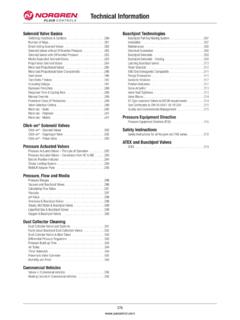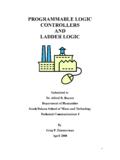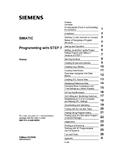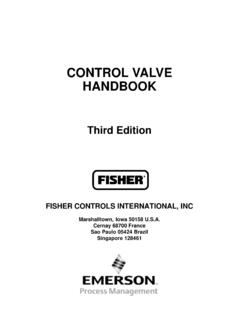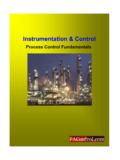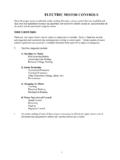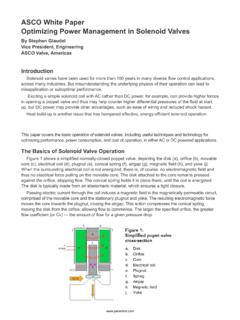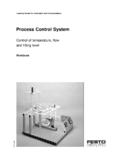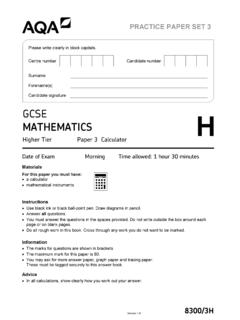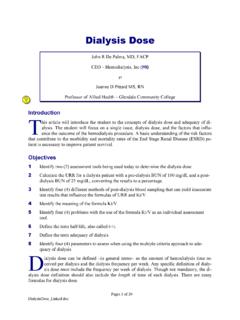Transcription of Fundamentals of Instrumentation and Control
1 1 Instrumentation AND Control TUTORIAL 4 INSTRUMENT SYSTEM MODELS AND CALIBRATION This tutorial is mainly about instrument systems and simple mathematical models. It brings together the various elements covered in tutorials 2 and 3. It leads into more advance work on Control system models. It is provided mainly in support of the EC module D227 Control System Engineering. On completion of this tutorial, you should be able to do the following. Explain the model of a basic instrument system. Calculate the relationship between input and output for complete system.
2 Explain and identify the main errors that occur in instrument systems. Explain the basic principles of calibration. Explain primary and secondary standards. In order to complete the theoretical part of this tutorial, you must be familiar with basic mechanical and electrical science. 2 1. MODELS OF INSTRUMENT SYSTEMS A mathematical model relates the input and output of a system or sub-system. In other words it is a formula relating the input and output. The instrument is usually drawn as a block with the input and output shown.
3 The mathematical model is written inside the block. The general symbol for signals is but specific symbols may be used. The suffix i denotes the input and o the output. When the input and output is a simple ratio, the model is just a number representing the ratio of output to input. It is often denoted by G, especially if it is a gain. In such case G = o/ i. If the input and output have different units, then G has units also. WORKED EXAMPLE Find the output if the input is 10 mW. The gain is a ratio and not in decibels. SOLUTION G = o/ i = 50 o= 50 x i = 50 x 10 = 500 mW WORKED EXAMPLE Find the output if the input is 50oC.
4 SOLUTION G = o/ i = 2 v/oC i = o/2 = 50/2 = 25 V SELF ASSESSMENT EXERCISE 1. The input is 2 mm, find the output. (Answer 6 V) 3. The input is 250 rev/min, find the output. (Answer V) 3 Some sensors have non linear equations and we cannot represent the relationship with a simple ratio so must use the full equation. For example a differential pressure flow meter has an equation Flow rate = C ( p)1/2 Where C is a constant and p is the differential pressure. WORKED EXAMPLE The input and output of the meter is related by the law Q = C ( p)1/2 Where Q is the input flow rate in m3/s, p is the output differential pressure and C is the meter constant.
5 Determine the flow rate when p = 250 Pa and C = m3/s per Pa. SOLUTION Q = C ( p)1/2 = (250)1/2 = m3/s or dm3/s 4 2. MODELS FOR COMPLETE SYSTEMS A complete instrument system is made up from several sub-systems connected in series. The best way to deduce the input or output of a complete system is a step by step analysis of the information passing through. Consider the case of a flow meter. The meter converts flow rate into differential pressure. The is then converted into current and the current is indicated on a meter.
6 WORKED EXAMPLE The equations for each sub system in the above system is as follows. Flow meter p = 2 x 106 Q2 where p is in bar and Q is m3/s. P/I converter I = 20 p where I is mA and p is in bars. Ammeter = 14 I where is in degrees and I in mA. Calculate the output angle if the flow rate is m3/s. SOLUTION STEP 1 Calculate the differential pressure. p = 2 x 106 Q2 = 2 x 106 ( )2 = bar STEP 2 Calculate the current. I = 20 p = 20 x = mA STEP 3 Calculate the angle of the needle on the dial. = 140 I = 14 x = 5 SELF ASSESSMENT EXERCISE 1.
7 Find the output rotation for the temperature system below. the equations for each sub-system are as follows. Thermocouple 3 mV per oC. Amplifier gain 5 Meter per mV (Answer 54o) 2. An LVDT output is amplified and connected to a chart recorder. The block diagram is shown. Calculate the output movement of the chart recorder pen. The equations for the sub- systems are LVDT V = V/mm Amplifier gain = 4 Chart recorder xo = 5 mm/V (Answer 48 mm) You have just seen how to work out problems involving instrument systems with different subsystems connected in series.
8 The following is true for all types of systems. In many cases each block may have a model that can be written as a ratio of output to input G = o/ i. (This is not always true). In such cases we can easily work out the model for the complete system as follows. Consider three systems with model equations G1, G2 and G3 connected in series. By definition G1 = 1/ I G2 = 2/ 1 G3 = o/ 2 Now consider that if the three make up a single system the overall transfer function is Goverall = o/ i If we multiply G1 x G2 x G3 we have ( 1/ i)( 2/ 1)( o/ 2 ) = o/ i = Goverall From this we conclude that the model for systems in series is obtained by multiplying the individual equations (ratios) together.
9 Before doing this, make sure that the units are compatible. 6 SELF ASSESSMENT EXERCISE 1. A potentiometer produces 50 mV per degree of rotation of its shaft. Calculate the angle when the output is 4 V. (Answer 80o) 2. A turbine flow meter coupled to an electric voltage generator produces 4 mV for each litre/s flowing. Calculate the output when 1 V is produced. (Answer 250 litres/s) 3. An instrument system consists of pressure transducer with a range of 0 to 5 bar and a corresponding output of 0 to 10 mV. The output is connected to an electronic processor which converts the output into a current in the range 4 to 20 mA, and an analogue meter which indicates the measured pressure.
10 A. Draw a neat labelled block diagram of the system. b. Deduce and write down the equation linking the output and input of the pressure transducer. (Answer G = 2mV/bar) c. Deduce and write down the equation linking the input and output of the processor. (Answer I = 4 + ) d. The output of the signal processor is 15 mA. Deduce the indicated pressure. (Answer bar) 4. An instrument system comprises an tachometer connected to a processor that converts the frequency into millivolts and then another processor that converts millivolts into milliamps.
